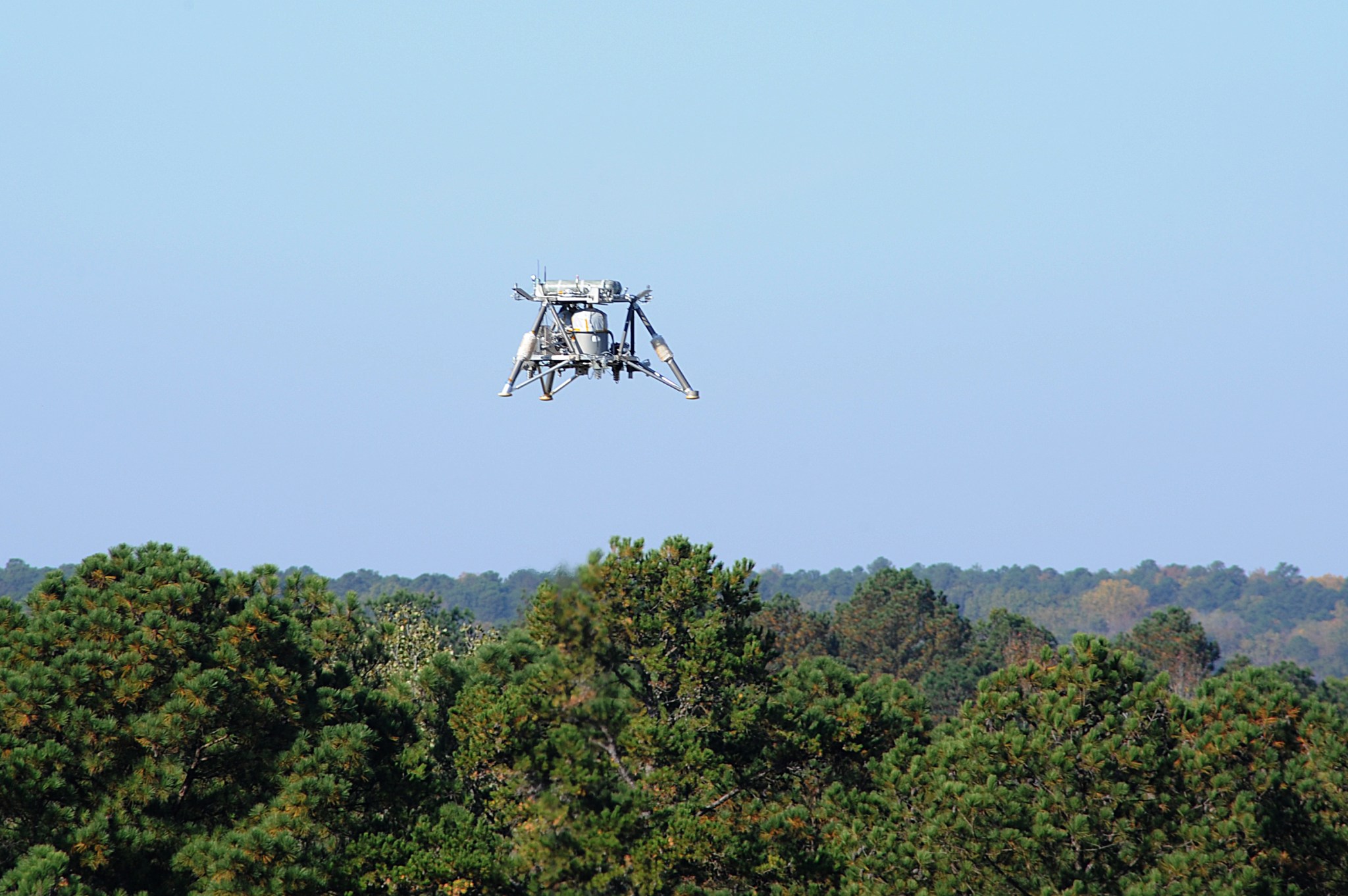The “Mighty Eagle,” a NASA robotic prototype lander, reached its highest altitude and velocity – and longest duration – on Oct. 25 when it soared to a height of more than 150 feet during a flight that lasted about 45 seconds.
“We are very proud of this safe, successful flight,” said Dr. Greg Chavers, test lead for the project. “The vehicle flew to a record height, and proved that it could handle the increased altitude and flight duration.”
Previously, the “Mighty Eagle’s” highest flight was 100 feet, with a flight duration of about 35 seconds.
“We are really excited,” added Patrick O’Leary, one of the test engineers for the project. “When I first started working on this project four years ago, our first vehicle – called the Cold Gas Test Article – could only do 10 feet for about 10 seconds. We’ve come a long way with the ‘Mighty Eagle’.”
O’Leary says the increased height and flight duration means that the vehicle could be used for different applications including testing sensors and other equipment that require higher altitudes and longer durations in the air.
“It really increases our capabilities for testing,” said O’Leary. “To get to the increased height, we had to increase the speed of the vehicle, and today’s test proved that we could do that successfully.”
The “Mighty Eagle,” nicknamed after one of the characters in the popular “Angry Birds” game, is a three-legged prototype vehicle that resembled an actual flight lander design. It is 4 feet tall and 8 feet in diameter, and weighs about 700 pounds when fueled. It is a green vehicle, fueled by 90 percent pure hydrogen peroxide, and is guided by an onboard computer that activates the thrusters to power the craft’s movements.
NASA will use the “Mighty Eagle” to mature the technology needed to develop a new generation of small, smart, versatile robotic landers capable of achieving scientific and exploration goals on the surface of the moon, asteroids or other airless bodies.
The “Mighty Eagle” was developed by the Marshall Space Flight Center and Johns Hopkins University Applied Physics Laboratory in Laurel, Md., for NASA Headquarter’s Planetary Sciences Division, Science Mission Directorate. Key partners in this project include the Von Braun Center for Science and Innovation, which includes the Science Applications International Corporation, Dynetics Corp., and Teledyne Brown Engineering Inc., all of Huntsville.
For more information on NASA’s robotic landers, visit:
https://www.nasa.gov/mission_pages/lunarquest/robotic/index.html





























